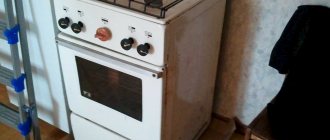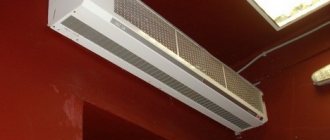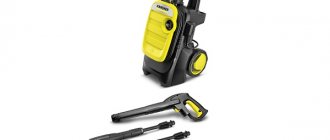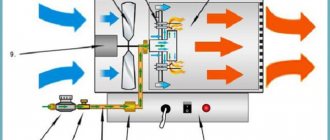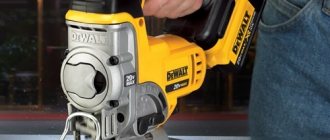Arbitrary movement of air in buildings and structures can have certain consequences in the form of mixing air, and accordingly changes in its temperature, smell, humidity and other properties. To control the corresponding process and avoid drafts, special equipment is used - thermal air curtains. They are energy-saving equipment and allow you to establish efficient operation of air conditioning, heating and ventilation systems in shopping and entertainment centers, production workshops and other facilities where this is necessary.
What is an air-thermal curtain, areas of application, control and functions
The air curtain is a powerful fan capable of creating a strong and directed stream of air. This jet becomes an invisible barrier to the natural movement of air, separating adjacent spaces. At the same time, the air flow does not interfere with the free movement of people. Various objects with increased cross-country ability need to perform the corresponding function. We are talking not only about office, public and industrial facilities, but also about residential buildings.
Thus, the main function of this equipment is to separate zones with different temperature conditions. Cold or, conversely, hot outside air cannot enter the room through open gates, entrance doors and other openings. At the same time, heating or air conditioning systems will operate with a minimum amount of losses, significantly saving energy. That is why the very possibility of using such equipment is a sign of energy saving.
Design and principle of operation
Modern air curtains are not characterized by the most complex design and operating principle, but they have two fundamental differences in the design of the units. They can be with or without a heating function, and the heat source can be electricity or hot water circulating in a radiator.
- Electric thermal curtains
- Water thermal curtains
The device itself is a rectangular metal case made of galvanized or stainless steel sheet. Inside there is a fan, a motor, a control unit, and if the curtain is thermal, then the air heater is an electric heating element or a water heater.
The principle of operation is very simple. A high-speed fan takes air, drives it through the heater, then a dense, significantly accelerated flow of warm air is blown through a special nozzle in the desired direction, creating an invisible door.
Controls and functions
The curtain is controlled using a wired remote control, which is installed next to the device. To automatically control the air temperature, the remote control has a built-in thermostat that turns the heater off and on when the set temperature is reached. Low-power devices with a small installation height, up to 2 meters, are most often equipped with controls located on the housing to reduce cost.
The presence of a thermostat is especially important when installing thermal curtains in vestibules, rooms with a small volume of air, and not so much for the sake of saving energy, but to prevent overheating of the device and burnout of tubular heaters. Some models are equipped with a duplicate remote infrared control panel with a signal receiver in the wall-mounted remote control, or less often in the body of the device itself.
Several fan performance modes are available for control, setting the desired air temperature in the room, as well as selecting the heater power level or turning off the heating function altogether.
Advantages and disadvantages
- Among the main advantages, we can highlight the uniqueness of the device, since nothing alternative has been invented with similar functionality at an affordable price.
- In most cases, installation and connection are quite simple, for models with an electric heat source. The simple design allows you to quickly and easily carry out all necessary maintenance and repair work.
- They are quite economical when operating devices as their main function - creating a barrier for the movement of air masses (fan operating mode without heating the air).
- Additional power required. To heat the air passing through the curtain at high speed, on average 6-9 m/s, a powerful heater is provided. Therefore, before you buy an electric heat curtain, you need to find out whether there is the necessary power reserve in the electrical network. On average, per meter of opening width, you need at least 6 kW to heat the air by 20°C.
- So-called water heat curtains require connection to a heating system. Mixing units are used to regulate the temperature. Not all facilities have such an opportunity; as a rule, these are large enterprises or buildings with their own boiler room.
- The main and only negative is the noise from the fans. All air curtains, without exception, operate quite noisily; this type of equipment should not be placed close to places where people stay for a long time.
Popular models
Below are the models that have received the largest number of positive customer reviews.
Ballu BHC-L10-S06-M (6 kW)
Thermal curtain Ballu BHC-L10-S06-M (6 kW)
Characteristics:
- Power adjustment: yes
- Power levels: 6000/3000 W
- Maximum air exchange: 700 m3/h
- Voltage: 220/230 V
- Fan: yes
- Ventilation without heating: yes
- Noise level: 52 dB
- Mounting options: wall
- Heat curtain installation: horizontal, max. installation height 2.50 m
- Dimensions (WxHxD): 108×15.5×15 cm
- Weight: 9.1 kg
Ballu BHC-B10T06-PS (6 kW)
Thermal curtain Ballu BHC-B10T06-PS (6 kW)
Characteristics:
- Power adjustment: yes
- Power levels: 6000/4000 W
- Maximum air exchange: 1100 cubic meters/h
- Voltage: 220/230 V
- Thermostat: yes
- Wi-Fi: no
- Bluetooth: no
- Mounting options: wall
- Heat curtain installation: horizontal
- Dimensions (WxHxD): 112.5×19.8×21.5 cm
- Weight: 12.8 kg
Timberk THC WS1 9M (9 kW)
Thermal curtain Timberk THC WS1 9M (9 kW)
Characteristics:
- Power adjustment: yes
- Power levels: 9000/4500 W
- Heating element type: heating element
- Maximum air exchange: 1160 cubic meters/h
- Voltage: 380/400V
- Fan: yes
- Ventilation without heating: yes
- Thermostat: yes
- Timer: no
- Mounting options: wall
- Heat curtain installation: horizontal, max. installation height 2.20 m
- Protective functions: overheat shutdown
- Dimensions (WxHxD): 159.7×18.3×12 cm
- Weight: 12.8 kg
How to choose a thermal curtain
To correctly select the described device, it is necessary to take into account several basic technical parameters.
- Placement of the device in a horizontal or vertical position;
- According to the heating method (if necessary) - electric heating element or water heater;
- The height of the opening or installation of equipment is determined by the speed of air flow at the exit of the nozzle - the efficiency of the jet.
- The width of the opening determines the length of the device and its power.
Recommendations
The length of the device must match the size of the opening and completely cover it. In terms of the efficiency of the air flow structure, it is best to provide a certain reserve, this is especially true at high-altitude objects, as well as where there are often strong winds. To solve global problems, preference should be given to industrial options. When choosing, it is important to pay attention to the power and connection of the electric heat curtain to the network.
- Electric thermal curtains 220V single-phase
- Electric air curtains 380V three-phase
Each consumer must choose the optimal model for himself, understanding that incorrectly selected equipment will not bring the desired effect. It’s easier to figure out how to choose a thermal curtain with the help of specialists.
Manufacturers of thermal curtains
It is important to pay attention to the equipment manufacturer. The Russian market offers a wide range of domestic manufacturers. The most popular of them are Teplomash (St. Petersburg), Tropic (Moscow), IZTT Izhevsk Thermal Equipment Plant (Izhevsk), on the premises of which equipment under the brands Ballu, NeoClima, Kalashnikov, Royal Clima is produced and assembled , Zilon and other numerous brands that do not have their own production. Foreign analogues, such as General Climate, Frico, Olefini, due to their high cost and inability to compete, were almost completely forced out of the market by domestic manufacturers.
About prices
Air curtains are produced by both Russian manufacturers (Teplomash, Tropic, etc.) and foreign companies (Siemens, Frico, etc.).
Prices for thermal curtains for the front door range from 4,000 rubles to several hundred thousand rubles. The cost depends on the parameters, power, equipment with various additional functions and manufacturer. Thus, a curtain with pumping capacity of 900-1200 m3/h with high quality characteristics from a foreign manufacturer costs $500-700 or more. But you can choose a cheaper domestic analogue and create a comfortable indoor microclimate!
Installation of air-heat curtain
It is important to choose the right location for the equipment. In this situation, it is impossible to do without studying the technical parameters of the opening itself where installation is planned and a suitable model. The optimal installation method is also analyzed.
According to the installation method, air curtains can be divided into two categories:
- Horizontal thermal curtains for placement above the door
- Vertical thermal curtains placed on any side of the doorway
This is one of the main parameters in choosing the appropriate model. Although most modern devices can be installed in either of two positions, such curtains are called universal and make the choice much easier.
Horizontal placement
Most often, an air curtain is located above the entrance door to prevent even minimal drafts from entering the building or a single room. Fastening is done on the wall in the same plane as the opening; standard brackets included in the kit are used for this. In some cases, due to the design features of the curtain or entrance group itself, fastening is carried out to the ceiling using studs and steel corners, which are purchased separately.
Vertical placement
Special designs of entrance groups or other possible equipment located above the opening do not always allow installation of the curtain in a horizontal position. In such cases, the equipment is placed vertically on the wall - to the left or right of the opening. For special cases where aesthetics are required, manufacturers will always have an option for placing a column-type thermal curtain on the floor.
Equipment from all manufacturers has approximately equal standard dimensions in terms of device length. The most common ones, of which 1000 – 1500 – 2000 mm. In cases where the opening is wider than the device itself, they are installed several in a row and connected to one control unit.
Structure and principle of operation
Air-thermal curtains are designed on the principle of fans that force air into a room, but at a higher rotation speed. This fan creates a dense air layer in the doorway, which prevents the mixing of air flows of different temperatures.
Types of air curtains
- By type of installation;
- By type of coolant.
According to the type of installation, there are models with horizontal and vertical mounting, as well as hidden ones. Vertical curtains are installed at the top of the doorway along the entire width. Horizontal models are mounted on the side of the doors.
Hidden curtains are installed in doorways or on suspended ceilings. For specialized premises, products with additional functions are manufactured, for example, curtains with protection against water drops in car washes.
The coolant of these structures can be electric heating coils, heating elements and hot water from the heating system. Electrical devices are easy to install and maintain. Devices connected to water heating can be installed when building a house or during a major renovation. The price of water curtains is significantly higher than their electric counterparts, however, they quickly pay for themselves during operation.
Watch the video, how it works:
The advantages of spiral heaters include instant heating, reduced noise effect and uniform distribution of warm air over the air gap area. Prices for thermal curtains for doors range from 8,000 rubles.
The disadvantage is the burning of oxygen in the room. Heating elements do not have contact with air, due to the placement of the heating element in the heat-insulating material. Ceramic heating elements are considered the most preferred and economical (their price starts from 11,100 rubles).
Case length
Consumers have a choice of thermal curtains for entrance doors in a variety of formats. The standard length is 800 mm - this is the width of the most ordinary average door. Also on sale are longer samples, up to 2000 mm. If you choose the most optimal thermal curtain, you must ensure that its width is greater than the width of the front door.
It is problematic to make a very long thermal curtain, as this leads to a significant increase in the cost of equipment - due to the increasingly complex design. Therefore, the maximum dimensions are limited to two meters. If it is necessary to cover a wider opening, powerful vertical curtains or cascades of several horizontal models are used.
Electricity or hot water as heat source
Basically, electricity acts as a heat source, but there are models where hot water plays this role, it is supplied from the heating system.
Such systems are more difficult to install, but this is compensated by low costs with high equipment power. Typically, such models are used in industrial buildings where there are large open doorways.
We recommend: What is more profitable: getting a quick loan to your account, to a card, or in cash at the cash desk?
By type of control
The easiest way to control air curtains is with simple switches. Stepwise power adjustment significantly simplifies the design of the equipment, reducing its cost. But electronic control is more convenient, as it allows you to support additional capabilities - connection to climate control devices and external electronic thermostats, more accurate temperature control. Some models are equipped with simple infrared control panels (like those for a TV).
By area of application
Thermal curtains over the door in a private house are truly rare. The thing is that they are noticeably noisy and have high power. For home use, we recommend choosing a silent thermal curtain that operates on an infrared operating principle - this option will be the most optimal, relieving household members of annoying noise. If you want an air curtain, choose the lowest-power options.
All other thermal curtains are designed for entrance doors of industrial premises and workshops, restaurants and cafes, shopping centers and hypermarkets, exhibition pavilions and cinemas, train stations and airports. They are distinguished by increased power, which reaches 10-12 kW and even more.
Calculation example
| Other publications on the topic | |
| Comparison of thermal curtains of popular brands. Which is better? | |
| TOP 5 mistakes when choosing a thermal curtain | |
| The best thermal curtain for car washes. Selection algorithm | |
| Choose an air curtain and save. How? | |
Let us give an approximate calculation for installing a thermal air curtain for a gate 1 m wide and 2.5 m high. A prerequisite is the presence of a vestibule.
| Opening height | Curtain performance |
| Up to 1.5 m | not less than 300-400 m³/h |
| Up to 2 m | not less than 500-650 m³/h |
| From 3 m and above | not less than 1200 m³/h |
For the given parameters, a curtain with a capacity of 900-1000 m³/h is required. According to the equipment data sheet of most modern air curtains, the flow velocity at the outlet will be 8-10 m/s, and on the opposite side of the opening (at the bottom when installed horizontally, and on the side when installed vertically) it will be 2.5-3 m/s. The width of the curtain is at least 1 m.
Please note that the equipment passport always provides the recommended installation height.
The power of the curtain at the given parameters must be at least 3 kW. Power is calculated based on the required 0.1 kW per 1 m² of unheated room with minimal heat loss.
The specialist selects the optimal position of the air curtain, based on data on the parameters of the room and doorway.

